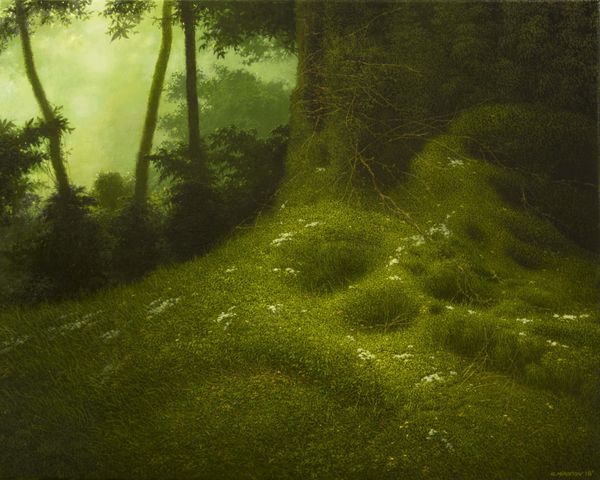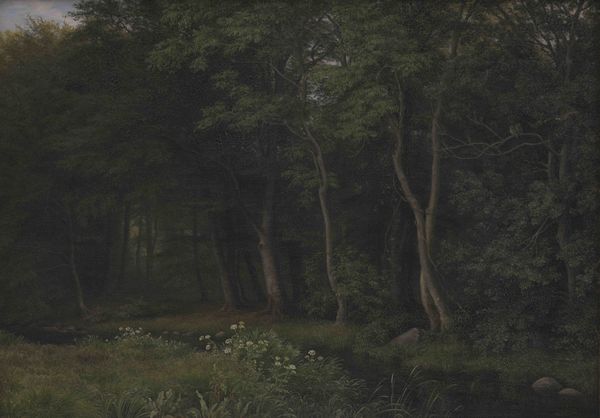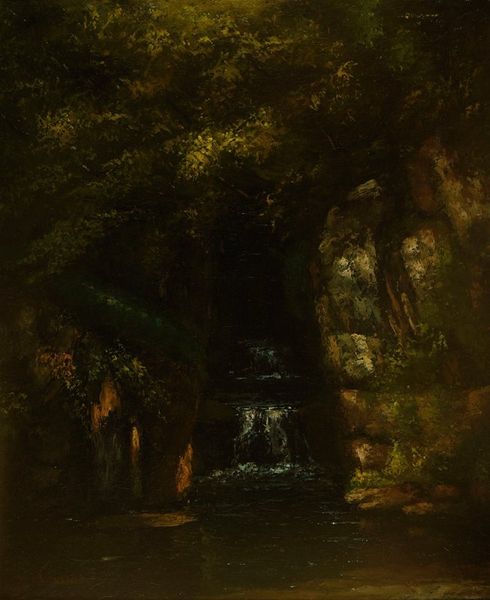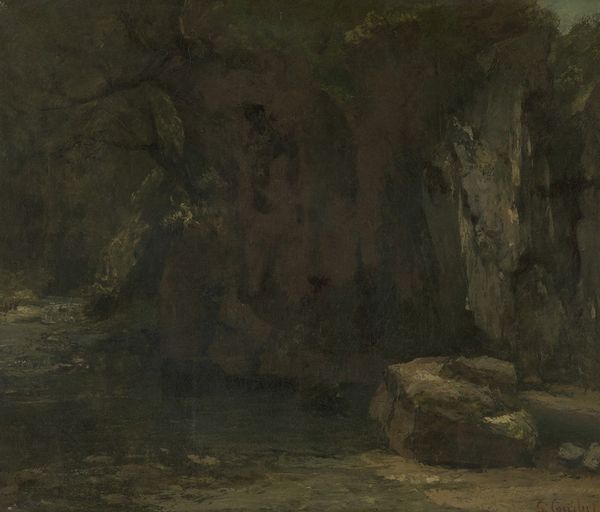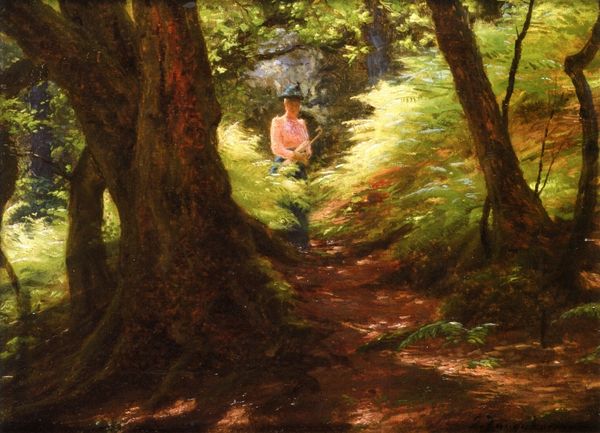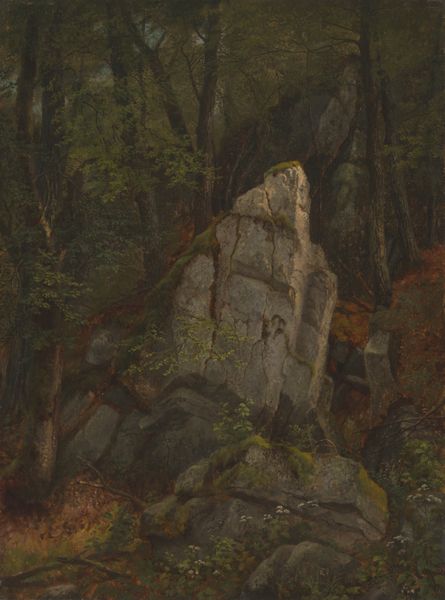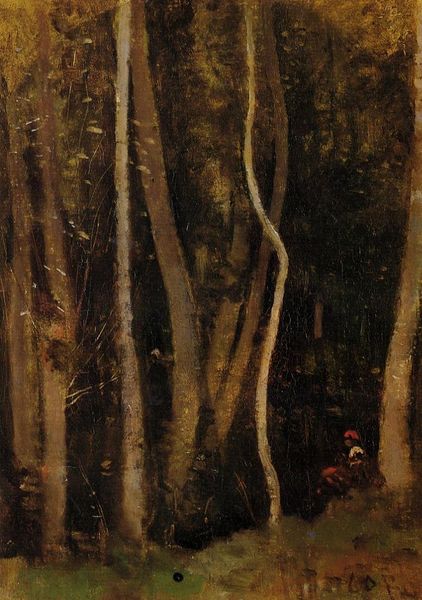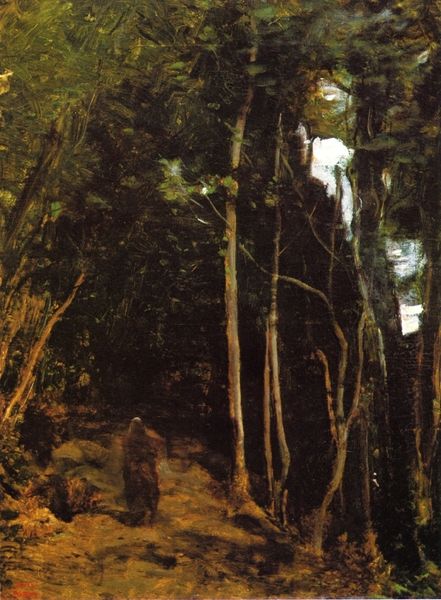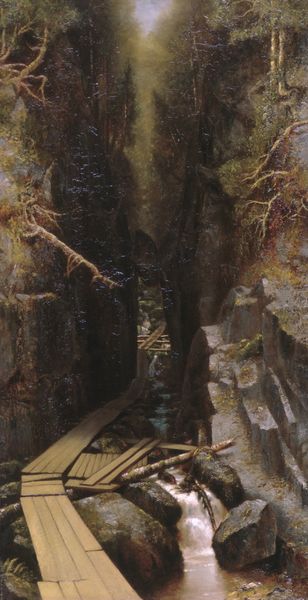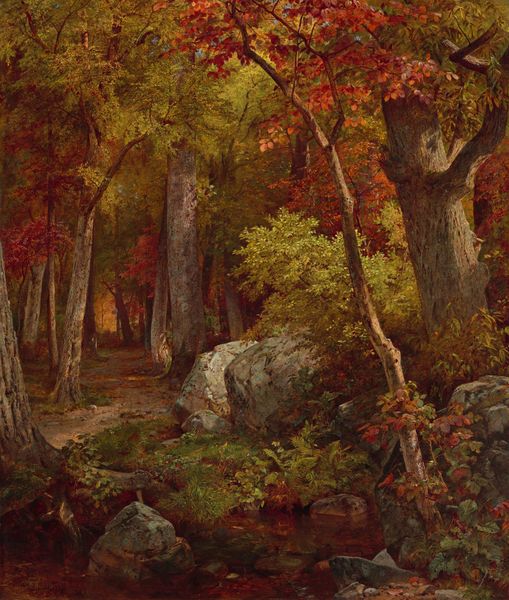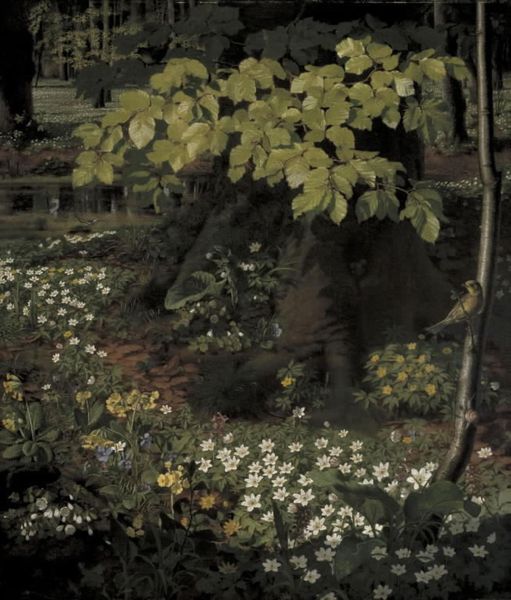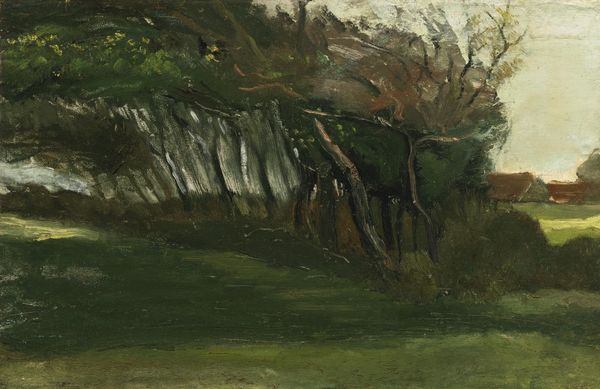
oil-paint
#
oil-paint
#
landscape
#
figuration
#
nature
#
oil painting
#
hudson-river-school
#
united-states
#
nature
#
realism
Dimensions: 51.3 × 35.6 cm (20 3/16 × 14 in.)
Copyright: Public Domain
Editor: So, this is "The Squirrel," an oil painting made sometime in the 1860s or 70s by Seymour Joseph Guy. It feels really immersive; the eye kind of gets lost in the undergrowth. What do you see in this piece? Curator: I see a convergence of potent symbols here. The hollow tree trunk speaks of nature’s cyclical process, of decay leading to new life. The squirrel itself—often associated with industriousness and preparation—might also hint at a deeper connection to memory and the preservation of cultural stories, perhaps echoing anxieties felt during the tumultuous period of its creation in the United States. Look at how Guy situates the small creature. Where is it placed, and what emotions are suggested? Editor: It's near the base of the tree, pretty small... almost hidden. Anxieties, like…after the Civil War? Was there a push to depict an idealized nature to escape current troubles? Curator: Precisely. The Hudson River School artists frequently imbued landscapes with symbolic weight. Nature, in its unspoiled form, represented American promise and potential. But, here, the decayed trunk might suggest the fading of older ideals or perhaps an awareness of nature’s inherent duality—both creation and destruction. The squirrel, then, becomes a fragile figure holding onto something valuable within this changing landscape. Consider the ways artists visually encode ideas across time, influencing the development and interpretations of common symbols like trees or animals. Editor: That's fascinating. It makes you wonder what "memories" the squirrel is guarding. I never would have thought of a landscape as carrying such symbolism. Curator: Art invites this kind of layered reading. Even something seemingly straightforward, like a squirrel in the woods, can be a profound statement on cultural memory and identity. Editor: I'll definitely look at landscapes differently from now on. Thanks!
Comments
No comments
Be the first to comment and join the conversation on the ultimate creative platform.

